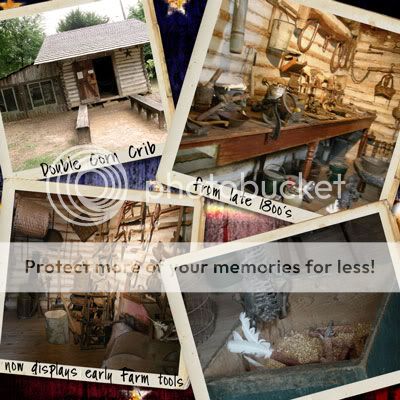[Note: This is part one of a 2-part series on the Battle of the Alamo. Though the Alamo isn't mentioned in Part I, the events leading up to the Battle are summarized here. The debut of the Alamo will be in Part II.]
A Rocky Start for a New Republic
After Mexico won its independence from Spain in 1821, there was a lot of political unrest. While the government was set-up as a constitutional monarchy, there were those that still wanted a federal republic. This struggle lent itself nicely to those with “ruler” aspirations to assert their own personal agendas, and these agendas weren't always in the Mexican citizens' best interests [to say the least]. The first ruler of Mexico was [the self-appointed] Emperor Iturbide I who would soon abdicate his throne in 1823, but not before granting Stephen F. Austin's request for the new Mexican government to recognize the Spanish land grant that was left to him after his father's [Moses Austin's] death. However when Iturbide abdicated, a republican congress was elected by Mexican citizens and they nullified all of Iturbide's acts during his reign. Luckily though, Austin and his very diplomatic and friendly ways had made some friends in Congress during his stay in Mexico City and in April 1823, he was on his way back to Tejas to settle his colony. [More of the Austin family's story can be found here.]
A Familiar-Looking Document is Created
In 1824, this republican congress also created the Constitution of 1824 which was heavily based on the United States Constitution except for the whole freedom of religion “thing”. Mexico made the Roman Catholic Church the official and legal church of the Republic of Mexico. Also, states were recognized in Mexico, but their roles were not explicit causing the constitution to be ambiguous and thus considered liberal, or permissive. It created a weak president elected by strong state legislators. It had a strong federal framework and not a centralized government. The Constitution of 1824 also combined the territory of Tejas with the state of Coahuila to form the state of Coahuila y Tejas [...not very original]. The citizens of the state of Tejas were not exactly excited about this because they had been advocating for separate statehood. However, Congress did indicate that they could apply later to be a separate state when the population had increased. The capitol of Tejas then moved from San Antonio to Saltillo and then later to Monclova. [See map below.] This really alarmed the Tejanos [Tejas citizens of Mexican heritage] and the Texians [Tejas citizens of mostly American heritage] because their seat of government was getting further and further away [which usually leads to a disconnect between government and its citizens].
The Floodgates Are Opened
Another very important govermental action made by Congress was the passage of the General Colonization Law, which allowed heads of households who were citizens and/or immigrants to Mexico to claim land. Mexico at the time was hurting for money due to the expense of fighting for its independence from Spain. Therefore, they did not have enough military to fight off the Comanche and Apache Native Americans who executed hostile raids in Tejas. In hopes of having colonists fend off the Native Americans, they literally opened the floodgates of immigration to Mexico and especially to the state of Coahuila y Tejas. However, like most laws it had some rules attached to it. For example, the new immigrants had to learn Spanish, had to convert to Roman Catholicism, and had to become Mexican citizens. In most areas, these rules were both ignored by the colonists and not usually enforced by local officials. [...and remember their seat of government wasn't exactly close by.]
The Six Flags of Texas ~ The Nine Flags of Nacogdoches
There were 3 failed rebellions for the Independence of Tejas. Two were before Mexico's independence from Spain: the Magee-Gutierrez Expedition in 1812 and the Dr. James Long Rebellion [the husband of Jane Long, the “Mother of Texas”] in 1819. The third was after the independence of Mexico in 1826: the Fredonia Rebellion. All three were located in the Nacogdoches area and [I find this surprising] all three had their own flags. As mentioned on a previous post about Nacogdoches, a total of nine flags have flown over it, while only six flags have flown over Texas [you know, like the amusement park, the Six Flags of Texas?].
Trouble Is A-brewin'
In 1829, it was becoming apparent that there was trouble brewing in Tejas concerning the colonists. The Anglo colonists [those who spoke English] were outnumbering the Mexican-born colonists, and Anastacio Bustamente, a dictator [and thus, a centralist], who had ousted the previous president of the Mexican Republic, wanted to send a representative to Tejas to see the effects of the General Colonization Law. He sent General Manuel Mier y Teran to check it out. Well, he discovered that the colonists were not assimilating into Mexican culture. They weren't speaking Spanish; they weren't converting to Catholicism or if they had, they weren't practicing it; they weren't agreeing to be naturalized; and most importantly, they weren't obeying the slave reforms that had been passed by the state. These problems with the colonists; the Fredonian Rebellion in 1826; and the 2 proposals made by the United States to purchase Tejas in 1827 for $1 million and in 1829 for $5 million, concerned Bustamente a great deal. In order to “control” the immigration that had become out of hand, Bustamente carried out a few more laws as follows:
- Foremost, with slavery being officially outlawed in Mexico in 1829 and with the non-compliance by the colonists, Bustamente issued an order on 6 Apr 1830 for Tejas to comply with the emancipation proclamation, or they would suffer a military attack. To go around this law, many of the Anglo-Americans made their slaves indentured servants.
- Bustamente also rescinded the property tax law which had up until now allowed colonists a 10-year exemption for new settlements.
- He increased tariffs on imports entering Mexico from the U.S., which made the costs of living go up for the colonists.
- He changed the control of settlement contracts from the state level to the federal level & required all colonies to have at least 150 inhabitants, or they'd be canceled.
- He cut-off all immigration from the United States to Tejas. [Interestingly, they were still welcome to settle in other parts of Mexico.]
- He ordered new military garrisons to be set-up in Tejas, which he was hoping would encourage Mexicans to settle in the area. Unfortunately, though, these garrisons would be partly staffed by convicts. [I guess his prisons needed some cleaning, too.] These convicts would be given land grants in Tejas after their military service was complete.
A New Culture Is Forming...
It would be fair to say at this point [if you are, indeed, still reading] that not all the colonists were of American heritage nor were they all slave owners. There were also colonists of Mexican heritage, but as mentioned before, the Americans outnumbered the Mexicans in Tejas. In Teran's report to Bustamente on the effects of the immigration law, he indicated that he was not against immigration, but that there needed to be some more balance between the two entities. Also, he was in favor of and in fact encouraged placing new military garrisons in Tejas. However, Bustamente, was worried about the lack of control. He had wanted the Anglo colonists to “handle” the Comanches and the Apaches, but he had not intended for the American culture to take hold in Tejas. Putting aside for a moment the issue of human rights and decency, however right he was on the enforcement of the emancipation proclamation [which he most certainly was], most citizens of all the states in Mexico were caught up in the political unrest of the time. Both sides had a responsibility to the emancipation of slaves. The colonists should have freed them, and the government [who had oftentimes looked away on this issue] should have enforced the laws that they had made. Also because of this political unrest in Mexico between the federalists [those who advocated for less centralized government] and the centralists [who obviously advocated for a more centralized government and who were throwbacks to the constitutional monarchy], the other states of Mexico were worried about the increasing centralism in Bustamente's dictatorship. There had practically been revolts in Mexico since its independence from Spain in 1821, and in 9 years Mexico had had, according to George McAlister's book The Battle of the Alamo: The Price For Freedom, one “emperor and eleven presidents – one a self-styled dictator,” referring to Bustamente. So, federalists in all states of Mexico were worried about these laws and Bustamente's quickness and strictness in implementing them all at the same time.
Did Someone Mention, “Dictator?”
Speaking of “dictators,” one had been rising up in the ranks of first the Spanish Royal Army, then after seeing that the Mexican insurgence was working, he quickly switched to the other side during the Mexican Revolution. His name was Antonio Lopez de Santa Anna, and this kind of “hopping-around-always-looking-for-a-better-personal-opportunity” would become a habit for Santa Anna. Federalists of all states were concerned about Bustamente and how much his “rule” was moving away from the ideals of the Constitution of 1824, and this led to more unrest. In turn, this unrest allowed Santa Anna to take up the federalists' side and he ousted Bustamente with the support of the federalists throughout Mexico including the colonists of Tejas in 1832. However Santa Anna, always on the look-out for an opportunity, would soon switch to the other side and become not only an advocate of a centralized government, but a very ruthless dictator who would forever change the history of Mexico as a whole, Tejas, and the United States.
Sources:
The Online Handbook of Texas
McAlister, George A. Alamo ---The Price of Freedom: A History of Texas. San Antonio: Docutex, Inc, 1988.
Constitution of 1824 [English]
Constitution of 1824 [Spanish]
Various documentaries, lectures, tours, and classes the author has participated in over a 20-year period. [Who knew that college class I took, Political Systems of Latin America would come in handy?]







































